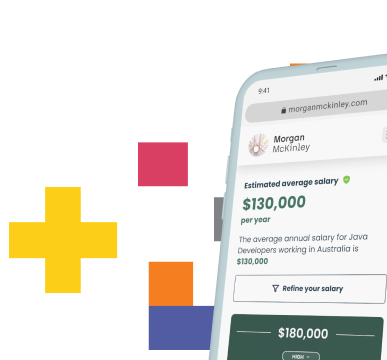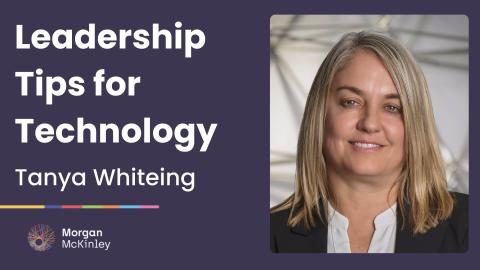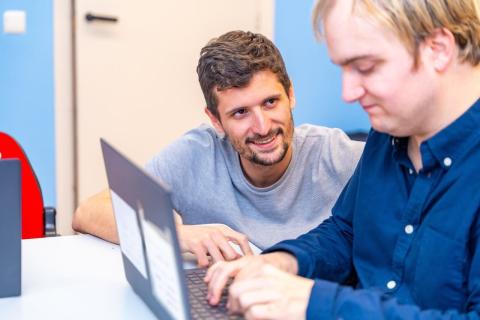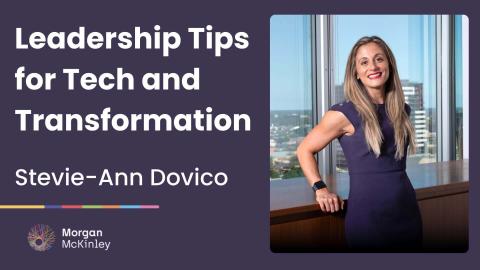Conducting an Interview: Before, During, and After

The job interview is one of the most important steps in the hiring process. This is the time to really understand if the candidate is a good fit for the role and your organisation. After all, as the hiring manager you are trying to avoid the costs associated with hiring the wrong person.
So, what are the necessary steps you should take to ensure you are conducting a job interview that not only helps you decide if the person is the right fit, but ultimately also offers a great candidate experience?
Here are our recommended interview guidelines for conducting a successful interview that will help you identify the best talent for your open role.
Before The Interview
- Organise logistics for the interview
- Arrange for someone to meet the candidate
- Book a meeting room
- Review their profile
- Prepare interview techniques and plan your questions
During The Interview
- Pitch your company to the interviewee
- Read their body language
- Listen and take notes
- Be aware of not forming biases
- Welcome questions from the interviewee
After The Interview

Before the job interview...
As with many things in life, preparation is key when it comes to conducting a successful job interview...
1. Organise logistics & send calendar invites
Make sure the candidate knows exactly where and when the interview will take place. Send a calendar invite with as much information as possible:

- Who is the meeting with?
- What is the address? Have you included what floor the office is on?
- What time is the meeting?
- How long do you expect the interview to last?
- Do they need to prepare anything? (e.g. a presentation)
- If they arrive by car, what parking options are available?
- What is the best way to get to your office by public transport?
- How will they get into the building? Is a keycard required?
- Is a keycard required for the lift?
- Is the building access restricted for non-employees during certain hours?
If you are organising a video interview ensure the candidate has been given a link and knows what software will be used (e.g. do they need to download Zoom?).
2. Arrange for someone to greet them
Now that the interviewee has made it into your building without any problems, will there be someone to welcome them?
Consider:
- Will this person show them the meeting room?
- Have you offered coffee/water/tea?
3. Book a meeting room
As simple as it sounds, it’s crucial you have a meeting room booked at the right time. You don’t want to be rushing around, trying to find a free room while the highly demanded professional is waiting for you and has done their part by being prepared and punctual.
Remember, it’s not just you conducting the job interview, it’s also the candidate’s time to interview you about the company and the role - this is especially critical if you are trying to fill a role that requires niche skills.
Consider:
- Are there any meetings scheduled immediately after the interview in that room? If at all possible, avoid that scenario so candidates have enough time to ask you questions and don’t feel like you are rushing them out of your office.
- Is this the best room? Are the walls thick enough or is it easy for someone to overhear your conversation or vice versa?

4. Review the candidate’s profile
While you will have reviewed the resumes before deciding on which applicants to invite for an interview, it’s worth having another look at the resume before starting the interview. After all, you are trying to attract the right type of person for your role and a lack of preparation might lead to a bad candidate experience and, ultimately, your ideal candidate not wanting to accept the offer.
The above pre-interview preparation tips are easy to follow and set up. Other parts of the “before interview” preparation might take longer, such as choosing the right interview technique and interview questions.
5. Choosing the right interview technique and questions
What type of interview you conduct will depend on what you are wishing to assess and the role you are looking to fill.
Develop an interview structure - You can typically start with an outline of your organisation and speak about what the role involves.
Top Tip: If you are using a structured interview approach, be sure to explain “the why” behind using a structured interview.
Interview questions - Seasoned interviewers often have their own shortlist of questions they like to ask to ascertain whether the person is the right fit. But to give you a rough idea, here are a few examples of the best interview questions to ask:
- “Describe the work environment in which you will most effectively be able to contribute.”
- “Tell me about a time when you had to overcome a major obstacle that stood in the way of you accomplishing a goal or commitment. How did you approach the situation?”
- “To date, what professional achievement are you most proud of?”
It’s important that the interviewer knows what questions they need to ask according to what skills they are trying to assess. LinkedIn has a great tool that can help with that, called the “Interview Questions Generator”. You choose a skill that you would like to assess and the tool provides you with a number of potential interview questions.

Interview techniques - There is no denying that hard, technical skills matter, but so do soft skills. Assessing both skills in an interview is crucial to identifying the right talent.
57% struggle to assess soft skills accurately - LinkedIn Global Talent Trends
Often behavioural and situational questions are used to assess a candidate’s soft skills but it’s important to be aware that they are susceptible to bias and often elicit rehearsed answers. Other, more innovative interviewing methods, such as projects or tech-based assessments aren’t as popular but can lead to less biased assessments.
During the interview...
You’ve reviewed the CVs, prepared questions and established a logical structure for the interview. Now it’s time to meet the potential new hire.
1. Prepare your pitch
One of the first parts of conducting the job interview, is describing your company and the role. As mentioned before, a job interview goes both ways: the candidate is also interviewing to see if they want to work for you, so be prepared to pitch your company.
Talk about your company’s ‘employee value proposition’ or ‘EVP’. This includes speaking about the benefits and rewards programmes, compensation packages but also about the work environment and the company culture.
Research by McKinsey shows exactly what the top talent values: Great Leaders, Great Company, Great Job and Great Rewards.
So, in addition to talking about the company culture and rewards, consider talking about your leadership teams and what they stand for - what it is the company wants to achieve.
Consider:
- What plan does your company have to expand?
- What do your current employees value the most?
- What is your company’s mission and how are you fulfilling it?
- How does the position fit into the company’s structure and how does it contribute to its success?
2. Read the body language
While you are asking the interview questions, try and look for certain non-verbal clues. Being able to read the candidate’s body language can add great value to your interview technique.
Keep in mind though that job interviews, by their very nature, can be quite stressful and signs of nervous laughter, fidgeting or rapid speech are often just that - signs of stress.
Consider:
- Do they seem confident?
- Are they avoiding eye contact?
- Do they seem engaged/disengaged with the conversation?
Learning how to read a candidate’s body language (as well as being aware of your own!) will help you in your search for the right candidate.
3. Listen and take notes
As simple as it sounds, listening and taking notes is crucial. As a hiring manager, you often focus on what your next question might be and risk missing out on crucial information the candidate might be giving you.
By listening carefully and taking notes, you will be able to see if the answers to your interview questions seem too rehearsed, for example.
4. Stay focused on the role
To try and ease the stress, it might seem helpful to talk about non-work related topics. However, the candidate’s answers might influence you more than you are aware. It’s natural to form a positive connection with someone if they have the same hobby or like/dislike for something. When conducting your interview, be mindful of that as to help you fight the interview bias.
This doesn’t mean you shouldn’t talk about hobbies or interests at all. It can be a valuable way to find out a bit more about the interviewee - just be aware of how that conversation may influence your perception. It can pay, especially over a video interview, to start the interview off with the more informal topics so they ease into the flow of things before the real questioning commences.
5. Welcome questions from the interviewee
As the interview comes to an end, give the candidate time to ask you more questions around the role and the company. A good candidate will use this time and opportunity to ask those questions and understand whether they are interested and if they are a good fit as well.
After the interview...
The interview doesn’t end when you bid farewell. Clear communication is not only important in the lead up to the interview and during the interview, but it is just as important after the interview.
1. Confirm next steps
Let the candidate know what the next steps are and when they can expect to hear from you and how - will you call them or email them?
“63% of candidates say most employers do not communicate adequately.”
With over 60% of candidates being dissatisfied with an organisation’s communication, ensuring you follow up and communicate clearly where the candidate stands will significantly help you stand out from the crowd.
2. Reflect on the interview and involve others
While the interview is still fresh in your mind, go over your notes to reflect on what was said and write down anything that comes to your mind.
If other people were conducting the interview with you, take the time now to share your thoughts. This will also help you with reducing the interview bias.















